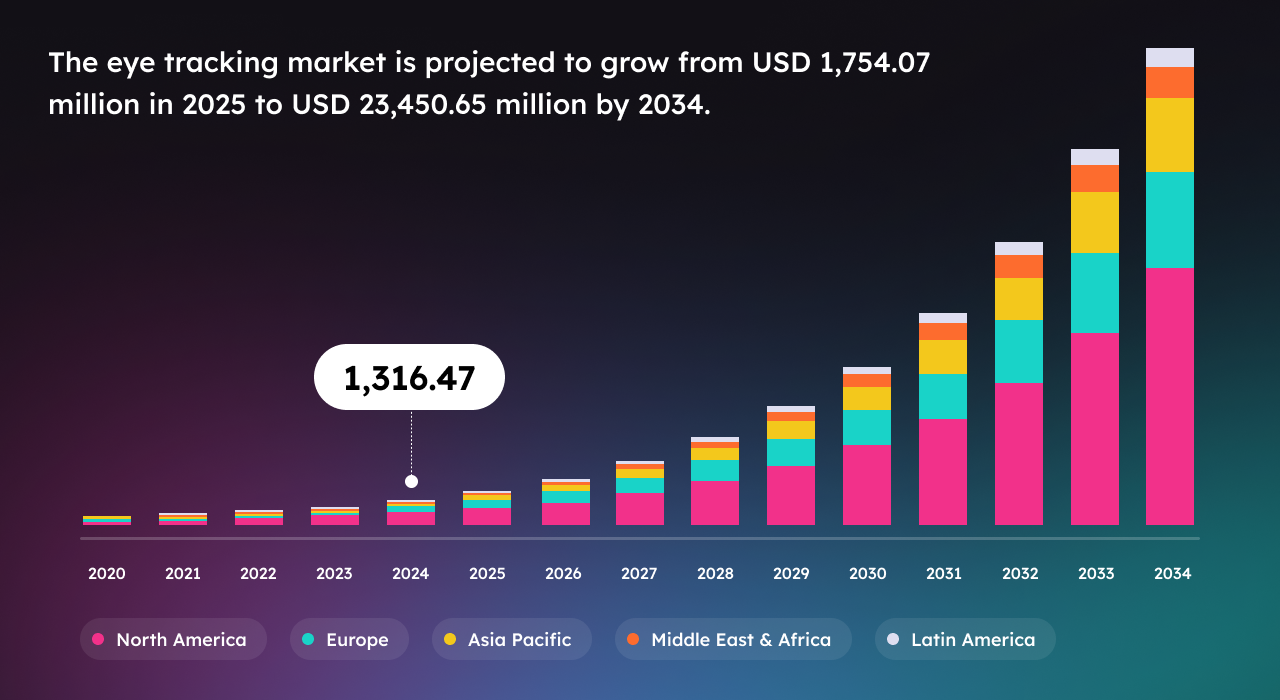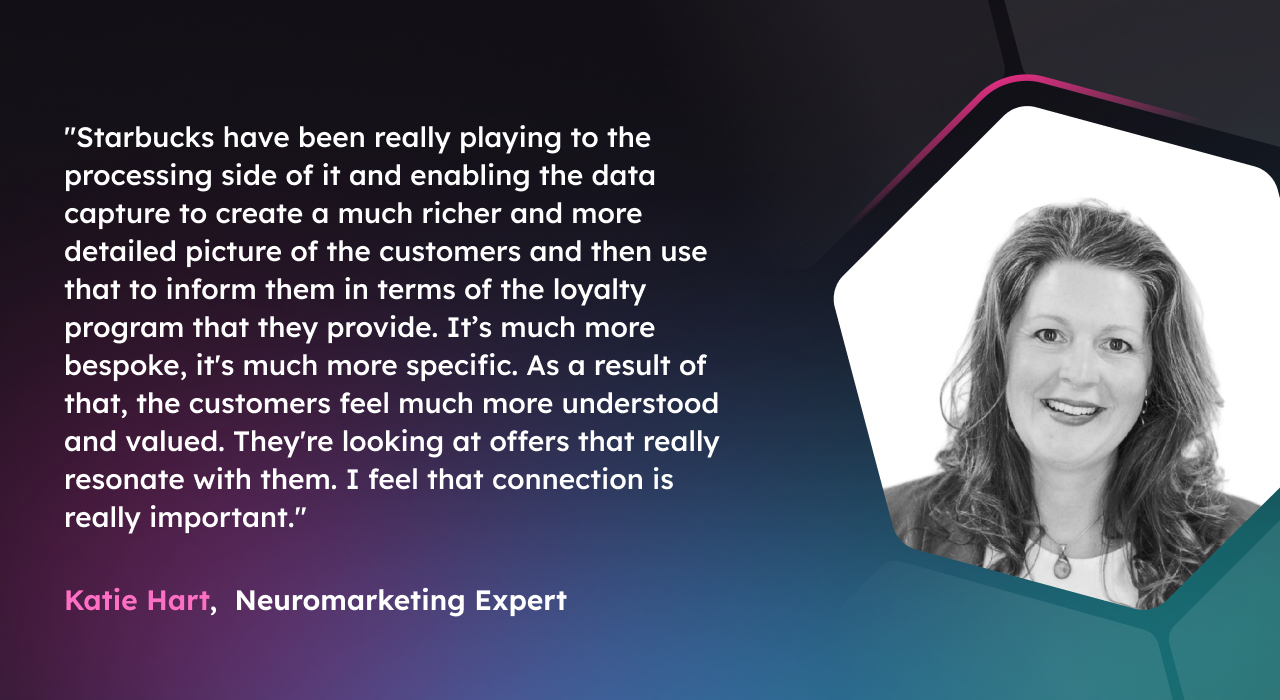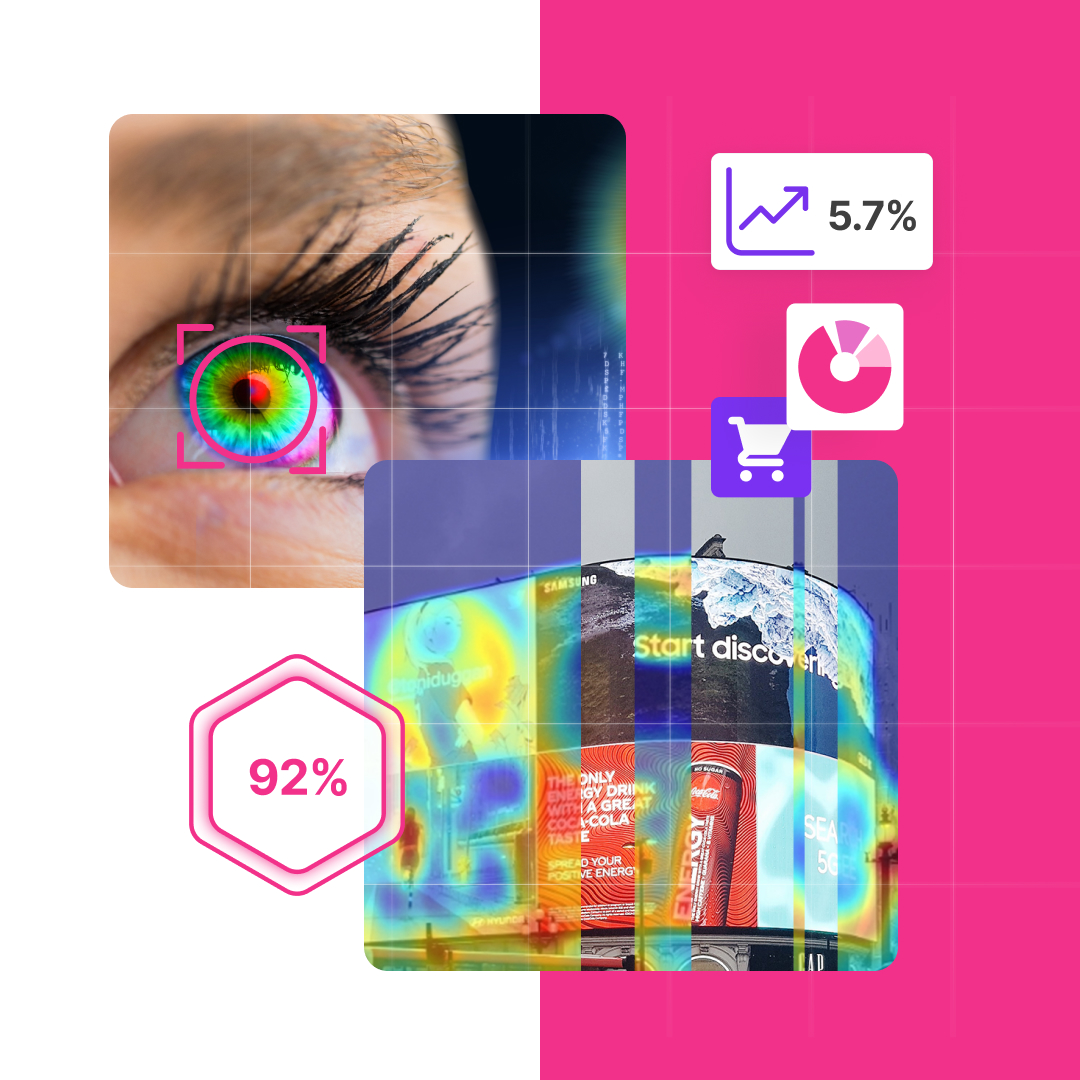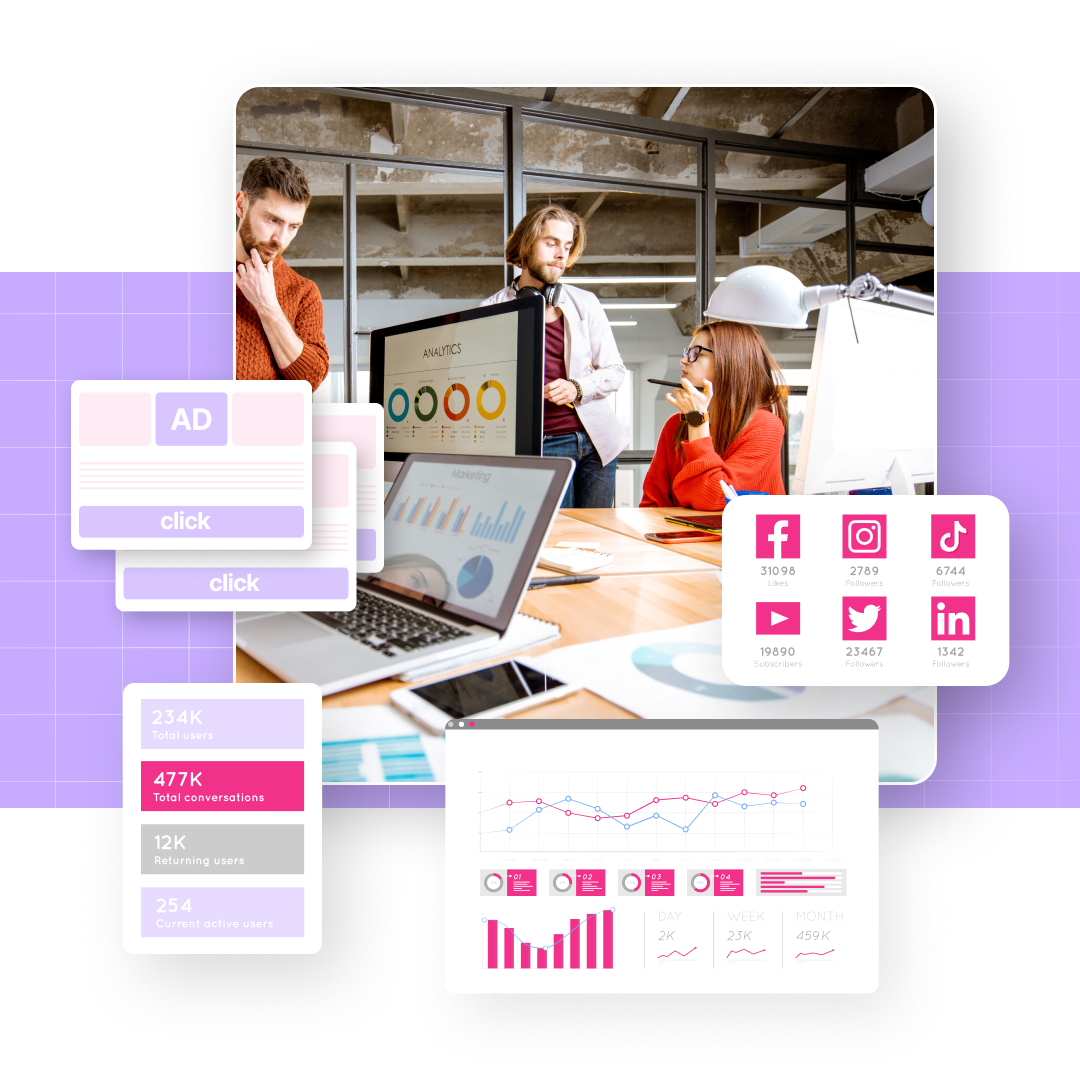For years, eye tracking technology has teased marketers with its potential to reveal candid consumer decision-making and unconscious behaviors. But capturing and decoding those insights with ease has proven challenging, until now.
Thanks to powerful AI and machine learning capabilities, innovative eye tracking solutions are providing unprecedented visibility into the consumer psyche in real-time. Brands that master this neuro-analytical capability stand to gain a powerful advantage, perceiving attention patterns before competitors.
As the technology's accuracy and accessibility improve, eye tracking is emerging as a powerful tool for achieving true consumer intimacy.
The Basics of Eye Tracking Technology
Eye tracking first gained traction in market research in the 1970s and 80s when advertising pioneers like RJReynolds used it to investigate how smokers engaged with cigarette ads and packaging. From there, adoption steadily grew as brands recognized its value for optimizing websites, print media, product designs and more.
Eye tracking technology does exactly what the name suggests, it tracks people's eye movements and pupil positions to determine precisely where their visual focus lies. Most modern eye trackers use infrared lights to generate reflection patterns on the cornea and pupil of the eye. High-resolution cameras then detect these reflections and pinpoint where the person is looking on a screen or in the physical world.
There are several different types of eye tracking setups in use today:
- Stationary eye trackers: These desk-mounted devices have cameras or sensors pointed at the user to track gaze patterns as they view a screen, website, product, or other stimulus. They’re commonly used for usability testing.
- Mobile eye tracking glasses: Lightweight glasses are fitted with an outward-facing camera and eye tracking sensors and allow tracking of real-world gaze as people shop, review ads, and more.
- Webcam-based tracking: Software that can track eye movements remotely via a device's inbuilt webcam. A webcam-based tracking solution might be suitable for remote user testing.
While the core technology stems from the same fundamental principles, eye tracking capabilities have evolved in recent decades. Early eye trackers used bulky headgear rigs that were accurate but intrusive. Today's mobile systems use glasses with unobtrusive tracking in real-world settings. Costs have also dropped substantially, going from expensive tools used only by academics to affordable platforms deployed across industries.
As a result, adoption is easier, and as technology advances, the ways in which you can follow someone’s eye gaze is providing more insights and better results for brands.

The Significance of Real-Time Consumer Behavior Analysis
Even the slightest delays in understanding your audience can set you back. Markets, trends, and consumer mindsets shift with such speed that, by the time traditional research data gets analyzed and formalized, those "insights" are often outdated.
This is where the power of real-time consumer behavior tracking methods like advanced eye tracking comes into play. Rather than waiting months to collect survey responses or lab observations, these technologies provide an instantaneous window into:
- What specific elements grab people's attention at any given moment
- How their emotional states, interests, and decision-making processes quantifiably change when exposed to different triggers
- Which subtle cognitive cues and physiological reactions reveal deeper, subconscious drivers of behavior
Compare this to mainstream marketing research tactics like focus groups or interviews, which prompt highly rationalized, consciously-filtered responses far removed from realistic purchasing environments. Or web analytics that tell you what people clicked on, but not why they did (or more importantly, didn't) click.
With integrated eye tracking and biometric sensor platforms, brands gain access to quantitative and qualitative data flows revealing consumer attitudes and motivations as they happen, not just what they report weeks or months later.
Such unprecedented visibility into the pivotal, instantaneous triggers shaping real-world decisions creates more agile strategies and activated insights.
Eye Tracking in Action: Applications Across
For consumer packaged goods (CPG) companies, eye tracking provides a direct line into how shoppers engage with products on cluttered retail shelves visually. Package redesigns are iteratively tested and given heat-mapping treatments to reveal focal points of optimization.
Neuromarketing firms study which designs are gazed at the longest. This is an indicator of consumer attraction. For new launches, packages that entice lingering looks amidst the "visual noise" enjoy higher recognition and sales.

Major CPG ad campaigns undergo exhaustive eye tracking during development. Beyond detecting attentiveness, the technology reveals subliminal impacts like frustration or appeal by monitoring subtle pupil dilations. Brands tweak ad creative that elicits subconscious reactions.
For shelf placement, eye tracking glasses map shoppers' literal lines of sight in stores, down to precisely which products catch that initial eye-focus at different shelf heights. This data guides smarter positioning strategies across grocery retailers.
Brands nailing their eye tracking strategy
Established brands have successfully implemented eye-tracking technology to gain more insight into buy behavior.
PepsiCo
At PepsiCo, the insights team conducts eye tracking studies as part of their consumer research. This data is incorporated into product development, especially for more health-conscious offerings. Eye tracking helps analyze ad effectiveness and product appeal during focus groups.
Unliever
Major CPG companies like Unilever routinely use eye tracking in market research practices. It’s common for Unilever to use eye tracking to optimize areas like packaging design and in-store product placement to better capture attention and drive sales.
How Eye Tracking Reveals Hidden Consumer Behaviors
Traditional research only skims the surface. What people tell you means little compared to observing their raw, unfiltered reactions. This is where eye tracking reveals consumer truths.
Forget the consciously rationalized survey responses and focus group chit-chat. By mapping eye movements and visual engagement, the technology lays bare core subconscious processes inseparable from real buying behavior:
- Attention and engagement indicators signal products, packaging, or ads that legitimately hook interest rather than prompt feigned politeness.
- Fraught decision-making subtleties unveil internal hesitations, doubts, or selling point impacts reaching the subconscious faster than self-reported rationale.
- Instantaneous emotional impacts, joy, frustration, desire, are detectable through pupillary responsiveness and oculomotor reflexes before they breach consciousness.
These hidden insights are the unseen influences that guide how well a product does and how likely people are to buy it, even before the buyers understand why they want it.
Deep understanding of the mental processes that influence buying decisions at the point of sale gives a strong ability to predict outcomes. Eye tracking converts observations into solid proof, overcoming the inaccuracies of self-reported actions.
How Eye Tracking Reveals Hidden Consumer Behaviors
Eye tracking allows researchers to see things that consumers themselves may not even be aware of. By closely studying where people look, It reveals unique insights into their:
- Attention focus: What specific elements or areas grab a customer’s visual attention versus what they gloss over.
- Engagement levels: How engaged or interested they are in what they're looking at based on metrics like gaze duration and number of eye revisits.
- Decision-making process: Subtleties in how their eye movements and pupil responses shift as they consider choices, revealing points of hesitation, confusion, or appeal.
Glimpsing into subconscious vision patterns and non-verbal cues provides powerful predictive data that traditional surveys and focus groups struggle to match. How someone scrutinizes packaging designs, advertisements, websites, or products with their eyes ends up being a leading indicator of their real purchase interest and product receptivity down the line.
While somebody may voice one thing during an interview, eye tracking cuts through their stated rationale to expose the authentic cognitive processes and emotional impacts at a subconscious level.
It’s an unprecedented window into the visual drivers of consumer decisions and offers a distinct competitive advantage for companies looking to optimize product performance, marketing effectiveness, and overall customer engagement.
Integration with Other Data Sources
Yes, eye tracking's ability to reveal subconscious vision patterns offers uniquely powerful insights on its own, but the real magic happens when that data is combined with other market research sources and advanced analytics capabilities.
Surveys and Focus Groups
Take traditional surveys and focus groups, for example. Layering quantitative eye tracking metrics over those stated consumer responses means brands get unprecedented context into whether people's observed behaviors actually align with what they articulated. Hesitation gazes or wandering attention spans are juxtaposed against someone’s claimed product affinity for a much deeper, multi-dimensional understanding.
Sales
Sales data represents another complementary data stream. Retailers can overlay eye tracking replays of shoppers' literal in-store line-of-sight with their transaction records. This helps connect specific package designs, shelf arrangements, or product positioning. Consequently, they can see which ones consistently captured high-value eye focus and led to conversions versus those that were overlooked.
AI and Machine Learning
Having those raw unfiltered eye tracking datasets to feed into AI and machine learning systems offers new insight autonomy and predictive analytics prowess. Computer vision models can detect patterns and micro-behaviors in the eye tracking data that not only explain past purchasing trends, but forecast future demand with striking precision.
The Future of Eye Tracking in CPG
As eye tracking technology continues advancing and CPG companies recognize its benefits, usage is only expected to accelerate. Hardware miniaturization already makes mobile eye tracking glasses and software solutions more compact and unobtrusive for real-world environments. Enhanced machine learning and computer vision capabilities will automate the analysis of increasingly massive eye data sets.
But beyond improving existing use cases like packaging design and advertisement testing, CPG companies are already exploring novel applications only made possible through pervasive eye tracking:
- In-home smart camera systems that track household product visibility and usage patterns to guide inventory planning.
- Integrated smart shelves and coolers in retail stores that adapt product positioning and assortments in real-time based on shopper eye focus data.
- Virtual and augmented reality simulations that map eye fixations across dynamic 3D product prototypes before any physical design iterations.
- Eye tracking-enabled shopping assistants and recommendation engines that customize digital browsing experiences to each consumer's vision patterns.
As this predictive vision data becomes embedded into more consumer touchpoints, CPG companies will see unprecedented closed-loop insights informing their decision-making, from conception through real-world execution.
The future isn't just about knowing what people looked at, but understanding the "whys" behind their gazes and adjusting everything accordingly before opportunities are missed. That’s important in an oversaturated landscape where split-second attention is the scarcest resource.
Summary: Unlocking Consumer Behavior With Eye Tracking Technology
Eye tracking cuts through stated rationale to expose authentic cognitive drivers of consumer behavior. Integrating its unfiltered vision data with advanced analytics helps uncover insights for optimizing product design, marketing, and shopper experiences. As applications expand, the question becomes: Is your brand using these subconscious behavior insights to captivate attention and conversions?



